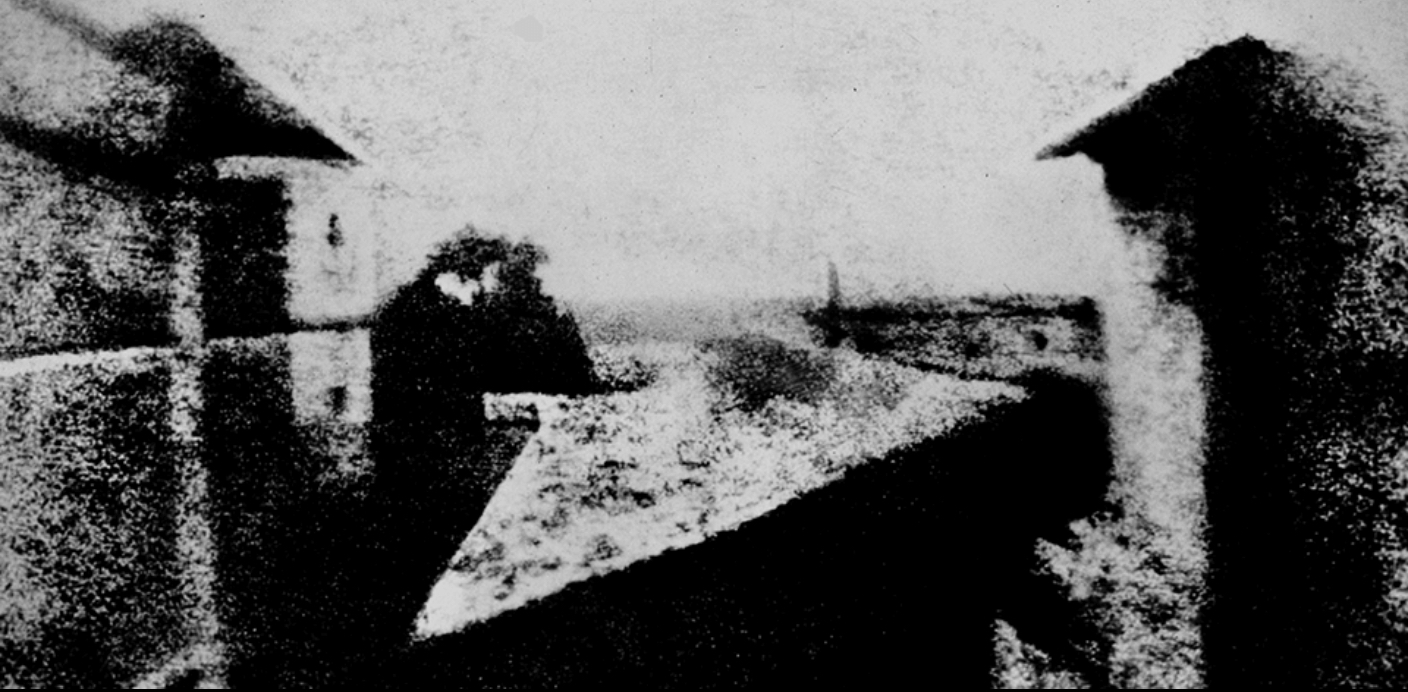Photography, derived from the Greek words “photos” (light) and “graphein” (to draw), is the art and science of capturing images by recording light or other electromagnetic radiation. Its evolution has been marked by significant technological advancements and artistic milestones.
Early Experiments and the First Photograph
The journey of photography began in the early 19th century with pioneers like Joseph Nicéphore Niépce. In 1826 or 1827, Niépce created the world’s oldest surviving photograph, titled “View from the Window at Le Gras,” using a technique he invented called heliography. This process involved coating a pewter plate with bitumen of Judea, which hardened upon exposure to light. The unhardened areas were then washed away, leaving a permanent image.
Daguerreotype and Calotype Processes
Following Niépce’s death in 1833, his partner Louis-Jacques-Mandé Daguerre continued to refine photographic techniques. In 1839, Daguerre introduced the daguerreotype process, which produced highly detailed images on polished silver-plated copper sheets. This method gained rapid popularity due to its clarity and relatively shorter exposure times.
Concurrently, British inventor William Henry Fox Talbot developed the calotype process in 1840. Unlike the daguerreotype, the calotype produced a paper negative, allowing for multiple positive prints from a single exposure. This negative-positive process became the foundation for modern photographic reproduction.
Advancements in Photographic Techniques
The mid to late 19th century witnessed several innovations that propelled photography forward:
• Wet Plate Collodion Process: Introduced by Frederick Scott Archer in 1851, this method involved coating a glass plate with collodion and sensitizing it just before exposure. It combined the image clarity of the daguerreotype with the reproducibility of the calotype.
• Dry Plate Photography: By the 1870s, the invention of gelatin dry plates allowed photographers to prepare plates in advance and develop them later, enhancing convenience and accessibility.
Color Photography and Beyond
Color photography emerged in the late 19th and early 20th centuries. In 1891, Gabriel Lippmann introduced a process for making natural-color photographs based on the optical phenomenon of light wave interference, earning him the Nobel Prize in Physics in 1908. However, it was the development of more practical color processes, such as the Autochrome plates introduced by the Lumière brothers in 1907, that made color photography more accessible to the public.
The Digital Revolution
The late 20th century brought about the digital revolution in photography. The invention of the digital camera allowed images to be captured electronically, stored, and manipulated without the need for film. This transformation democratized photography, enabling instant image sharing and editing, and has profoundly influenced both professional and amateur photography practices.
From Niépce’s heliograph to today’s digital imagery, photography has continually evolved, shaping and reflecting human experiences. Each technological advancement has expanded the possibilities of this art form, allowing us to capture and preserve moments with increasing fidelity and creativity.
